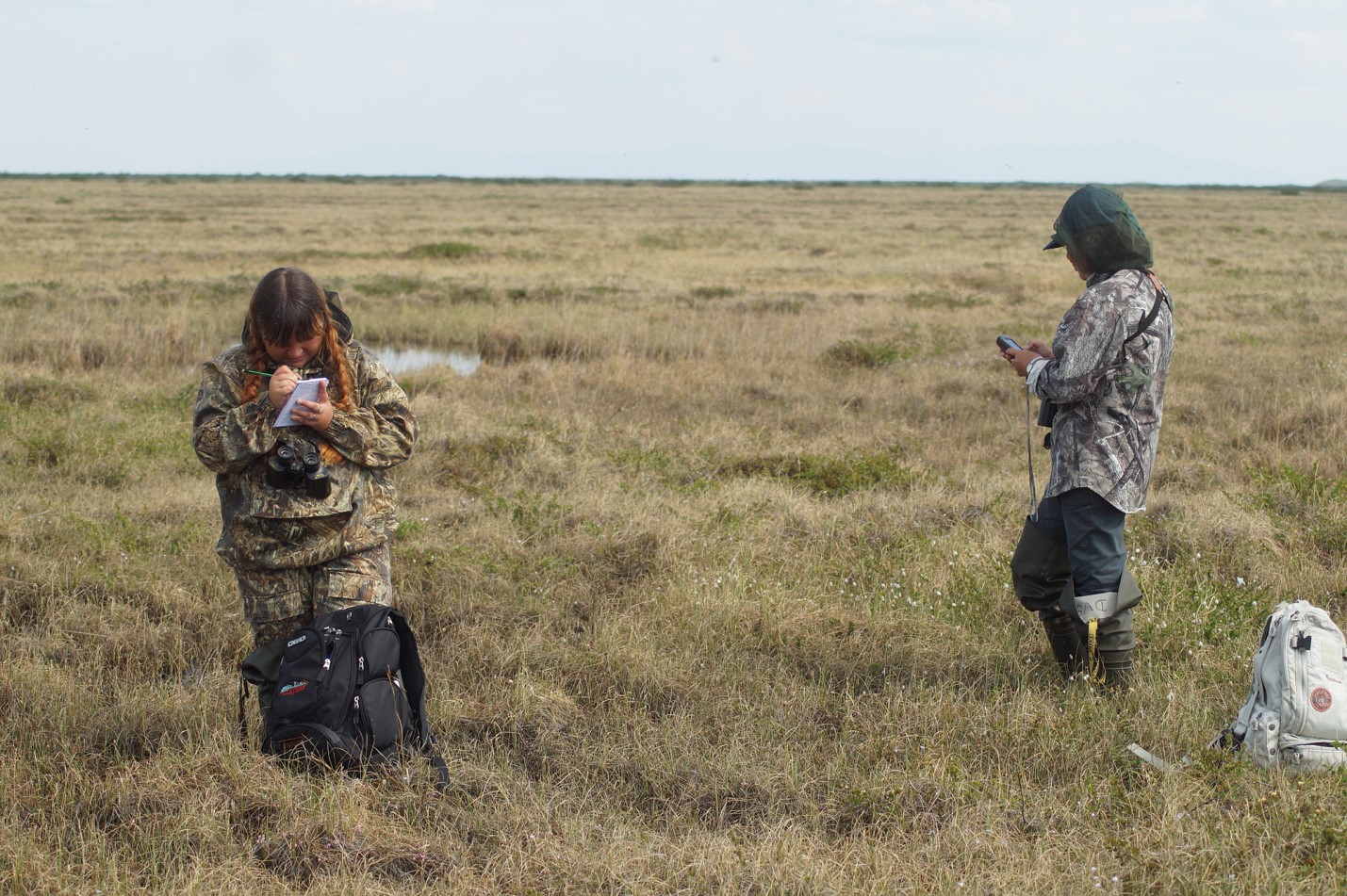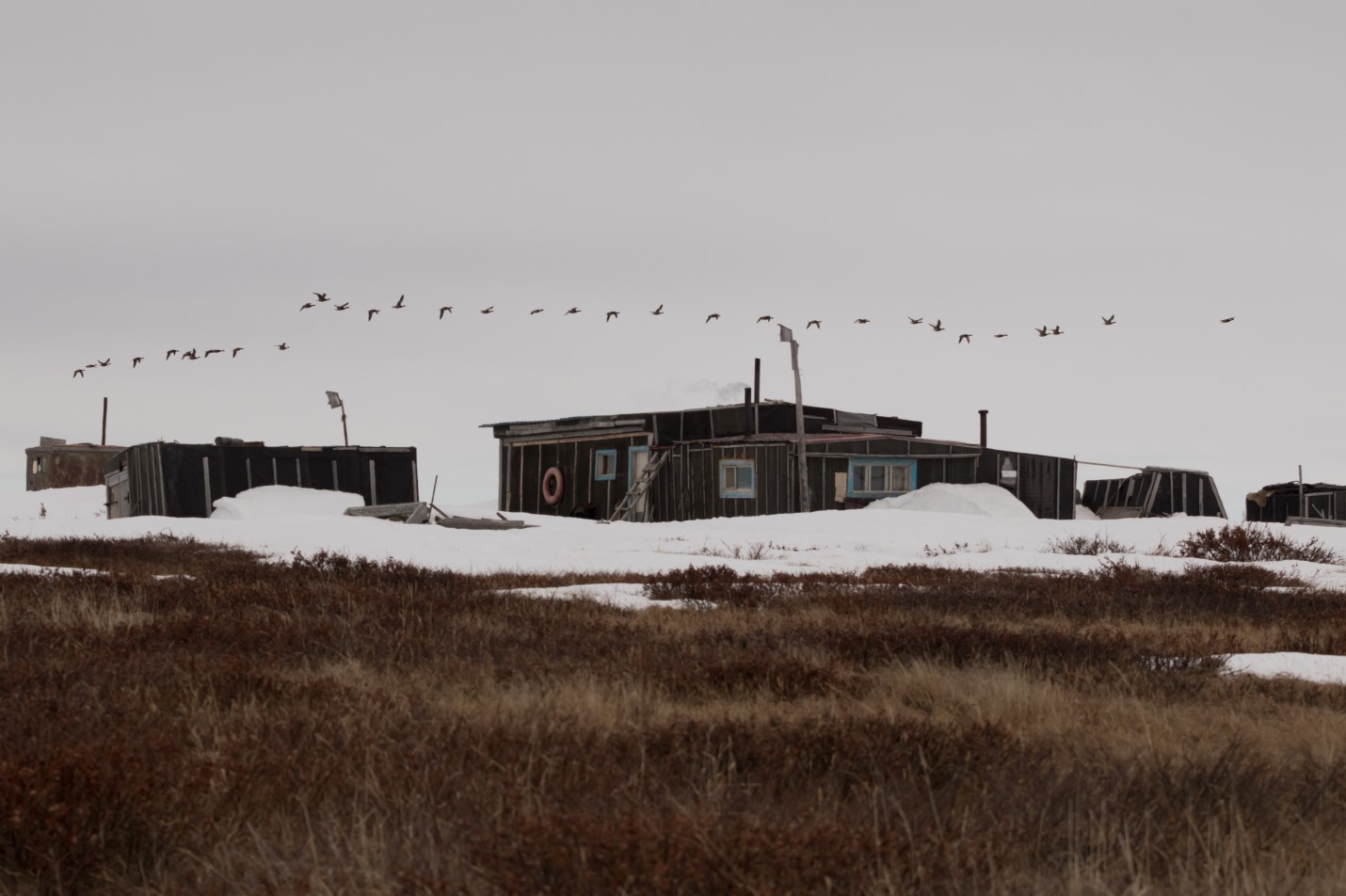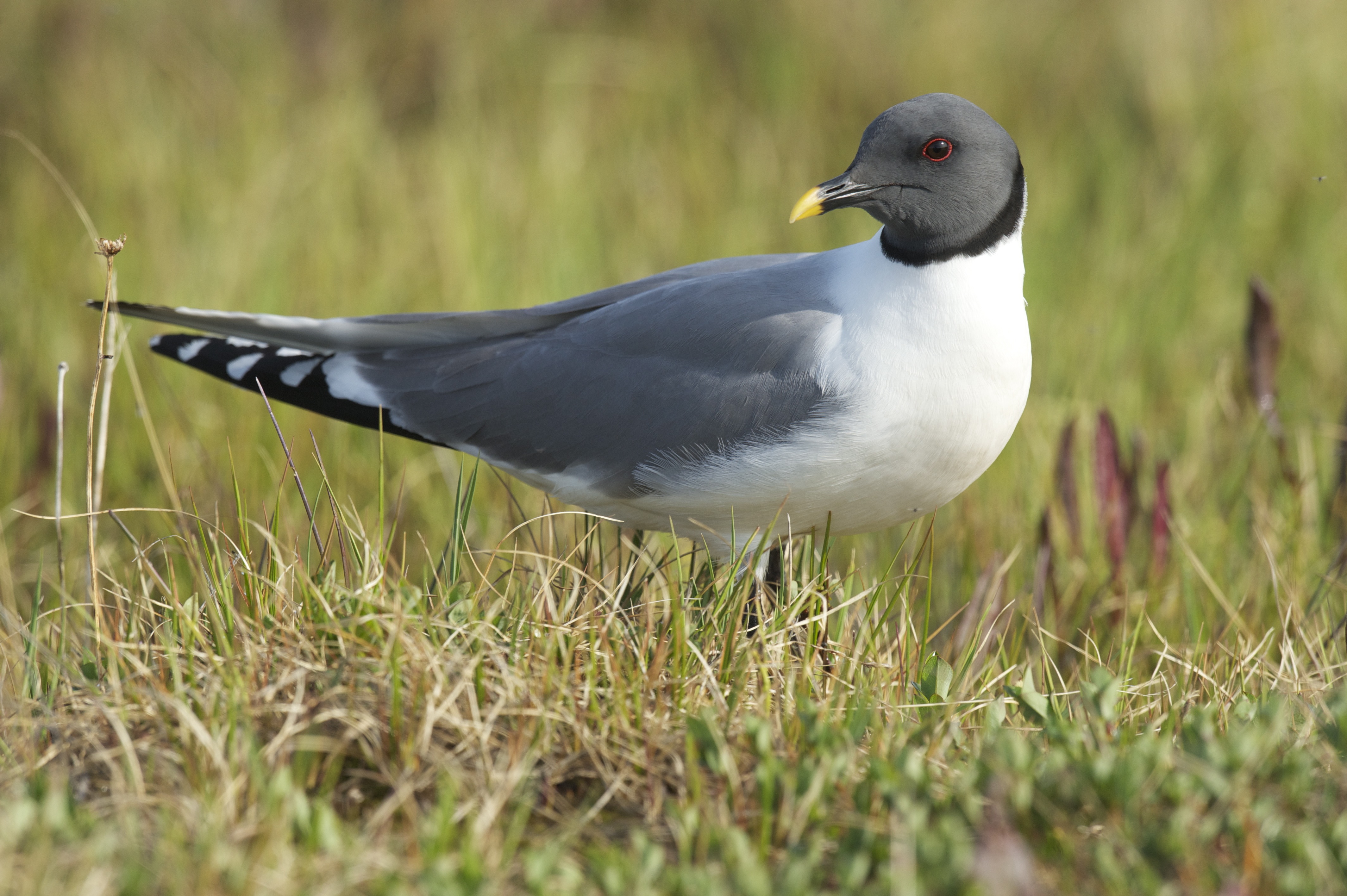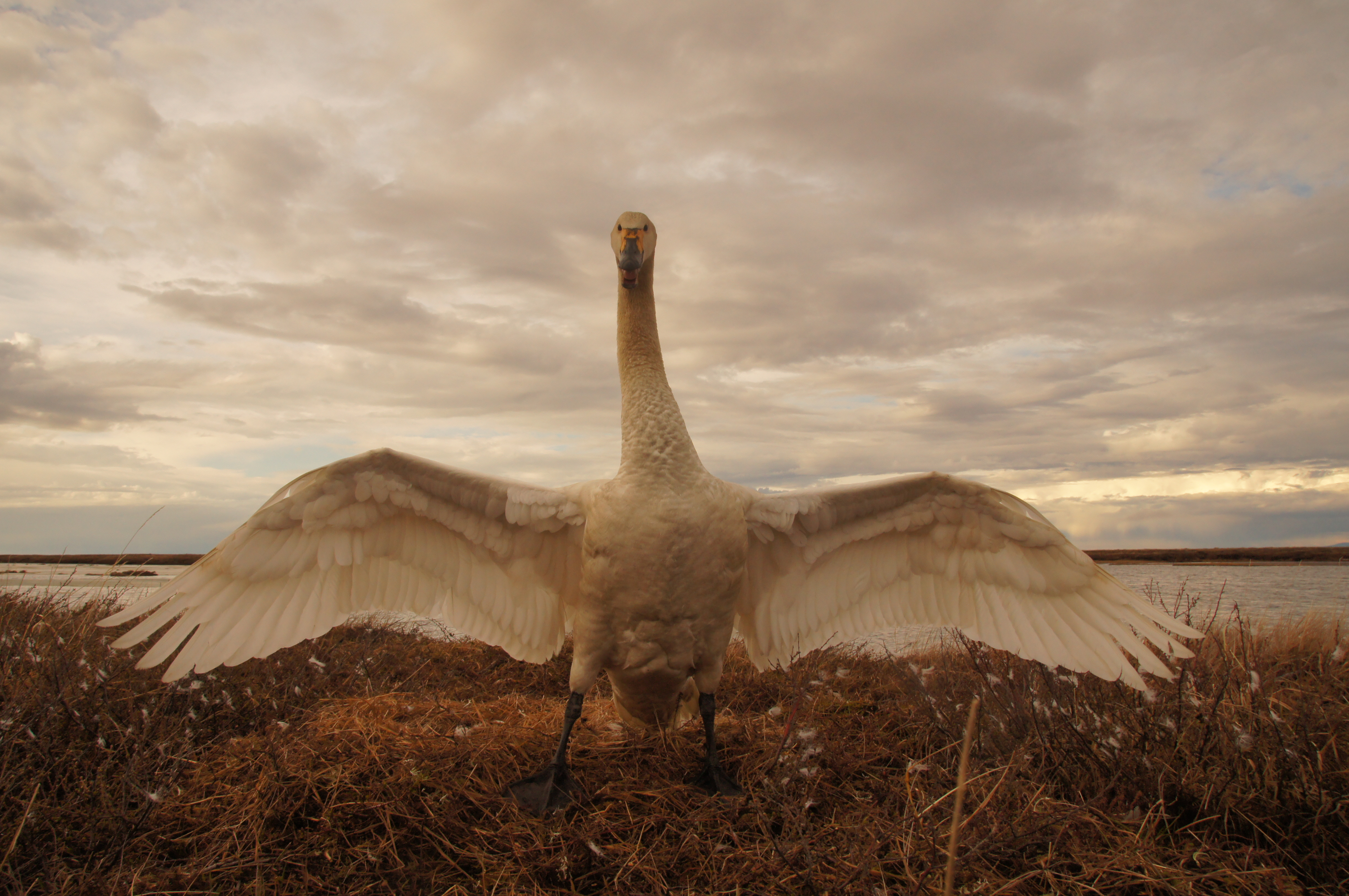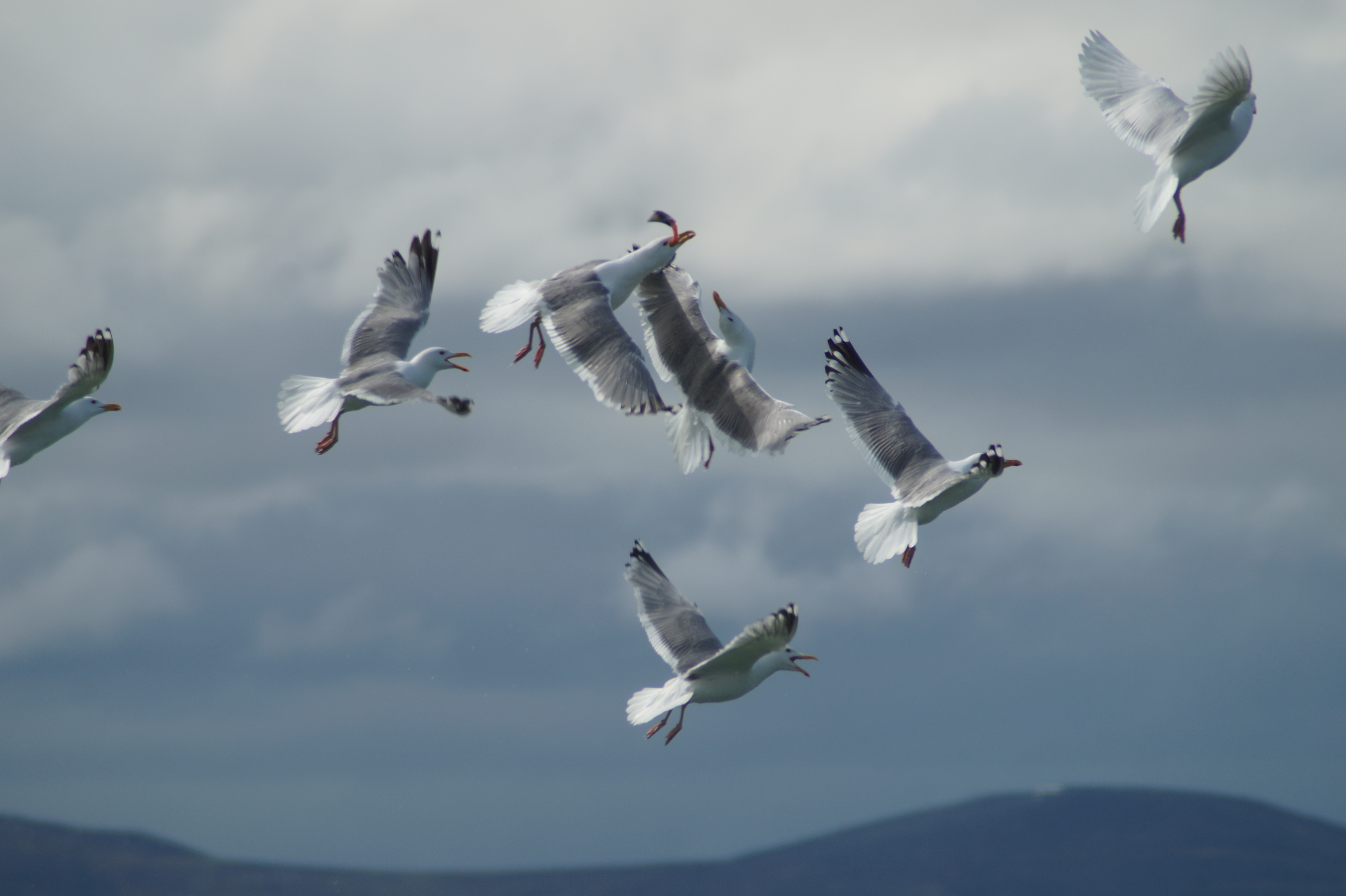There are very few field monitoring camps in North-East Asia where regular monitoring of breeding birds takes place. Almost none among them consider all groups of tundra breeding birds, as follows, waterbirds like cranes, shorebirds, and passerines; none, but Chaun Delta camp. We started monitoring work at this site in 2011 and it for the base of our previous long-term (2002-2010) monitoring of the Spectacled Eider, the threatened Beringian Seaduck. We used the same network on nest search plots throughout all years.
There are nine large plots of 1 km2 each for “large” birds and five shorebird plots of 0.16 km2 each. The team has a privilege to discover how the community of breeding birds changed with decades, because the monitoring had been set up at the same site at Chaun Delta in 1971 and lasted until 1989 with only several breaks.
Results
Here we provide some trends in breeding birds as became clear from comparison of historical and resent studies. Despite of alerting news from the wintering grounds the majority of nesting shorebirds remain stable in their nest density between 2011 and 2019 (Figure 1). However one species, the Curlew sandpiper, that was considered as common breeder in 1970-1980s, totally disappeared from the Chaun delta and from the other parts of Chukotka, from where it has been known, i.e. Ayon Island. We were unable to find any nest or even a pair with nesting behavior during our study.
Small gulls such as Ross’s Gull and Sabine’s Gull are showing significant decline. Although Ross’s Gull is not a common breeder in the Chaun Delta, yet there was only one record in 2003, which is alarmingly low. Same happened to Sabine’s Gull, which used to be commonly found breeding in the region between 2002 and 2007, it declined steadily to totally disappeared from the breeding ground in 2019. We suggested the increase in number of large gulls, VegaGull in particular, might lead to the decline in small gulls. Sabine’s Gulls from all known colonies were displaced by Vega gulls. It is the first ever alert on small gulls from the tundra, as far as we know, Sabine’s Gull still has stable numbers in Alaska.
Recent decline in density of the Tundra (or Bewick’s) Swan is explained by density-dependent regulation of the over-abundant population. This population increased from 2,000 to 45,000 birds in Japan (winter counts during the 1990-2000s (Albertsen & Kanazawa 2002; Ministry of Environment of Japan, 2018) and is now regulated1 by the reduction of productivity via reduced breeding propensity, low clutch size and lack of nest protective behavior (Solovyeva et al. 2019). Decline in nesting swans is accompanied with slight increase of nesting Bean and Greater white-fronted geese in the Chaun-Delta. This indirectly supports an idea of competitive interactions between swans and geese on breeding grounds.
The Bering Sea seems to become the second problematic wintering marine area along the EAA Flyway after the Yellow Sea. All the bird species known to spend winter in the Bering Sea are significantly (e.g. Glaucous Gull and Spectacled Eider; Figure 2) or insignificantly (e.g. Red-necked phalarope) decreasing in nest density in the Chaun-Delta.
We recommend Shorebird Working Group to pay attention to the trend of Curlew Sandpiper and to develop conservation actions before it reach critical numbers, as happened to the Spoon-billed sandpiper. Due to the declining population of Ross’s and the Sabine’s gulls in the breeding ground in Russia, we propose the consideration of these two species under the Seabird Working Group.
Field-work of 2019 was made possible with intensive work of the field team, including students and amateur birders. Monitoring of bird community was financially supported by the EAAFP Small Grant. The logistic and transportation support was provided by the Chukotka Gold Mining Co, subsidiary of the Kinross Gold.
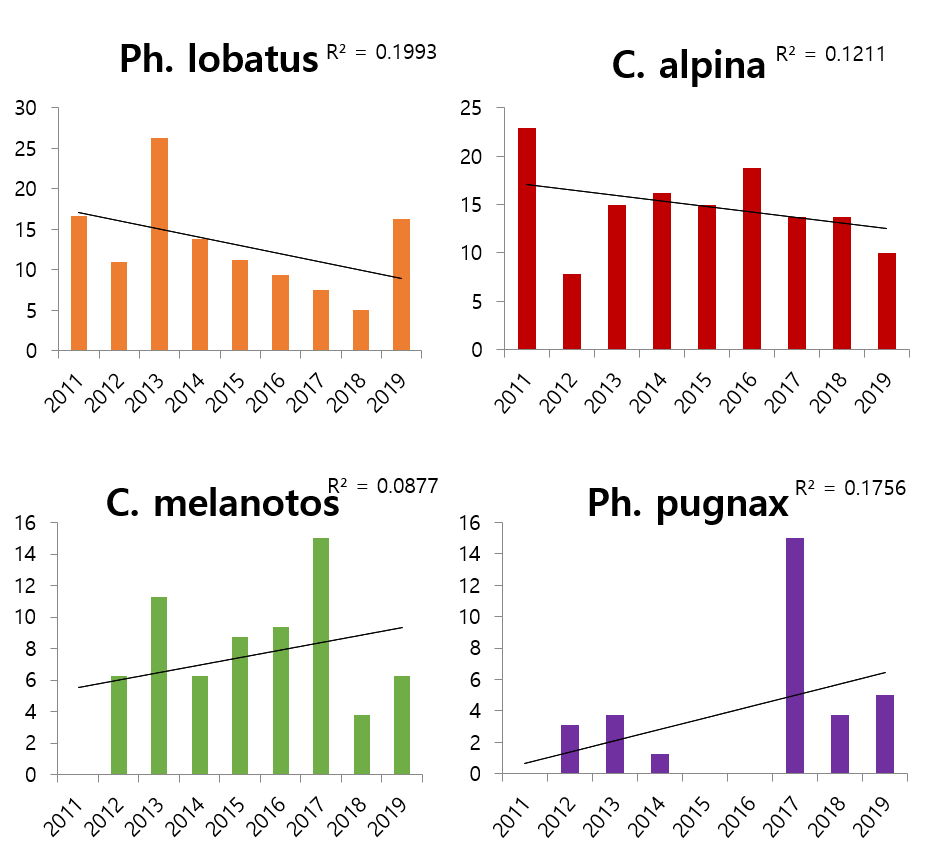
Figure 1. Nest density dynamics in the four dominant shorebird species in the Chaun delta in 2011-2019. R2 for each trend line is given. None of trend is significant. (graphs prepared by Diana V Solovyeva)
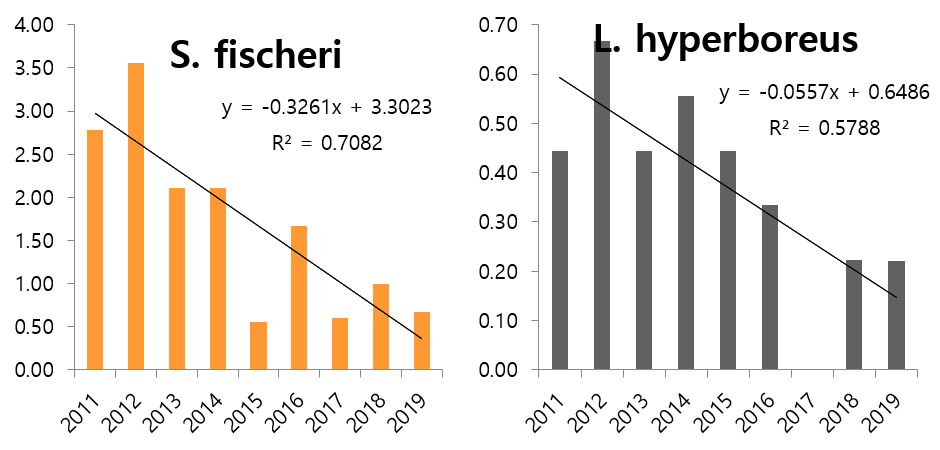
Figure 2. Nest density dynamics in the Spectacled Eider and the Glaucous Gull, both wintering in the Bering Sea, in the Chaun delta in 2011-2019. Equation for the trend line and R2 are given. (graphs prepared by Diana V Solovyeva)
Reference:
Article prepared by Diana V Solovyeva, from Institute of Biological Problems of the North FEB RAS

